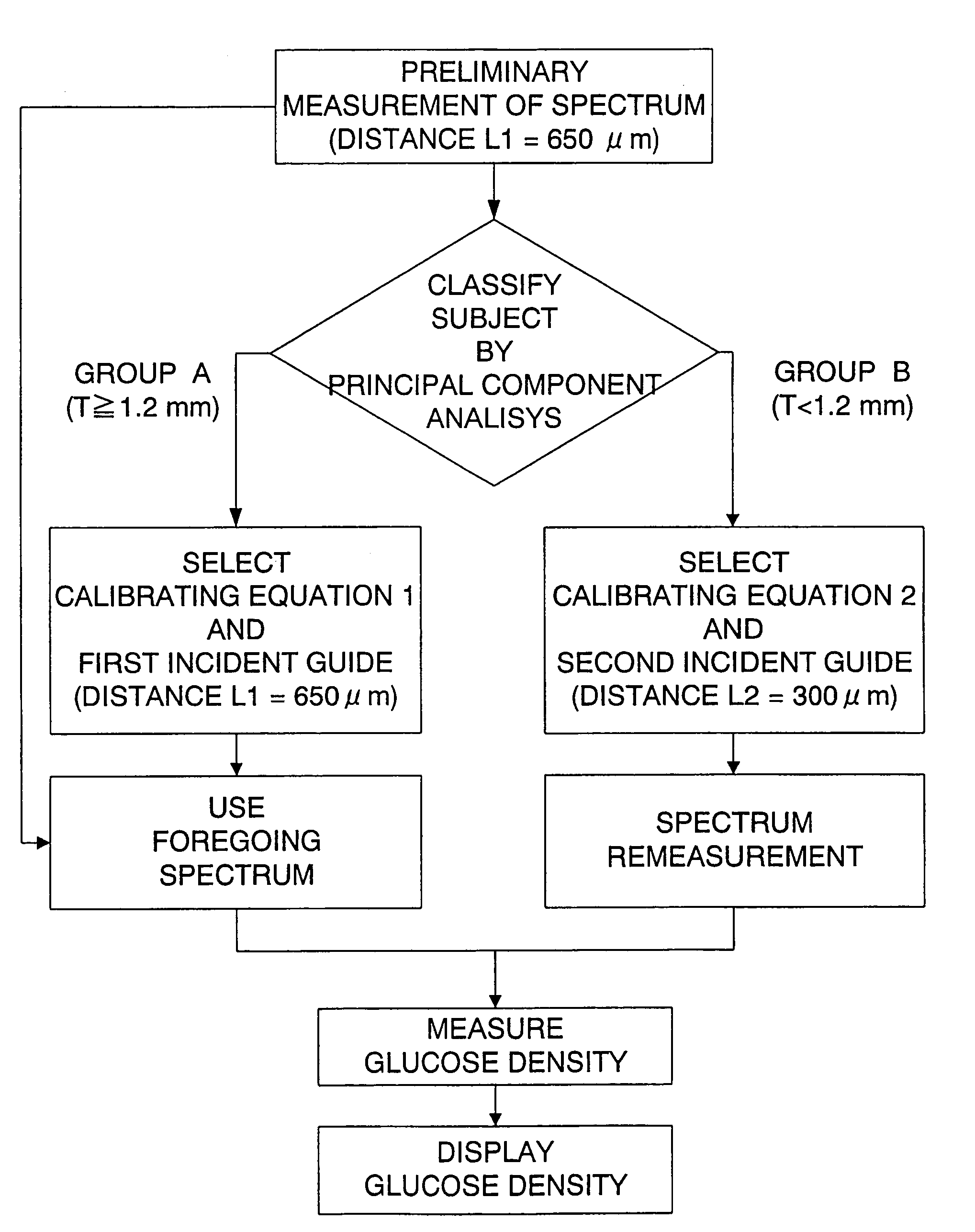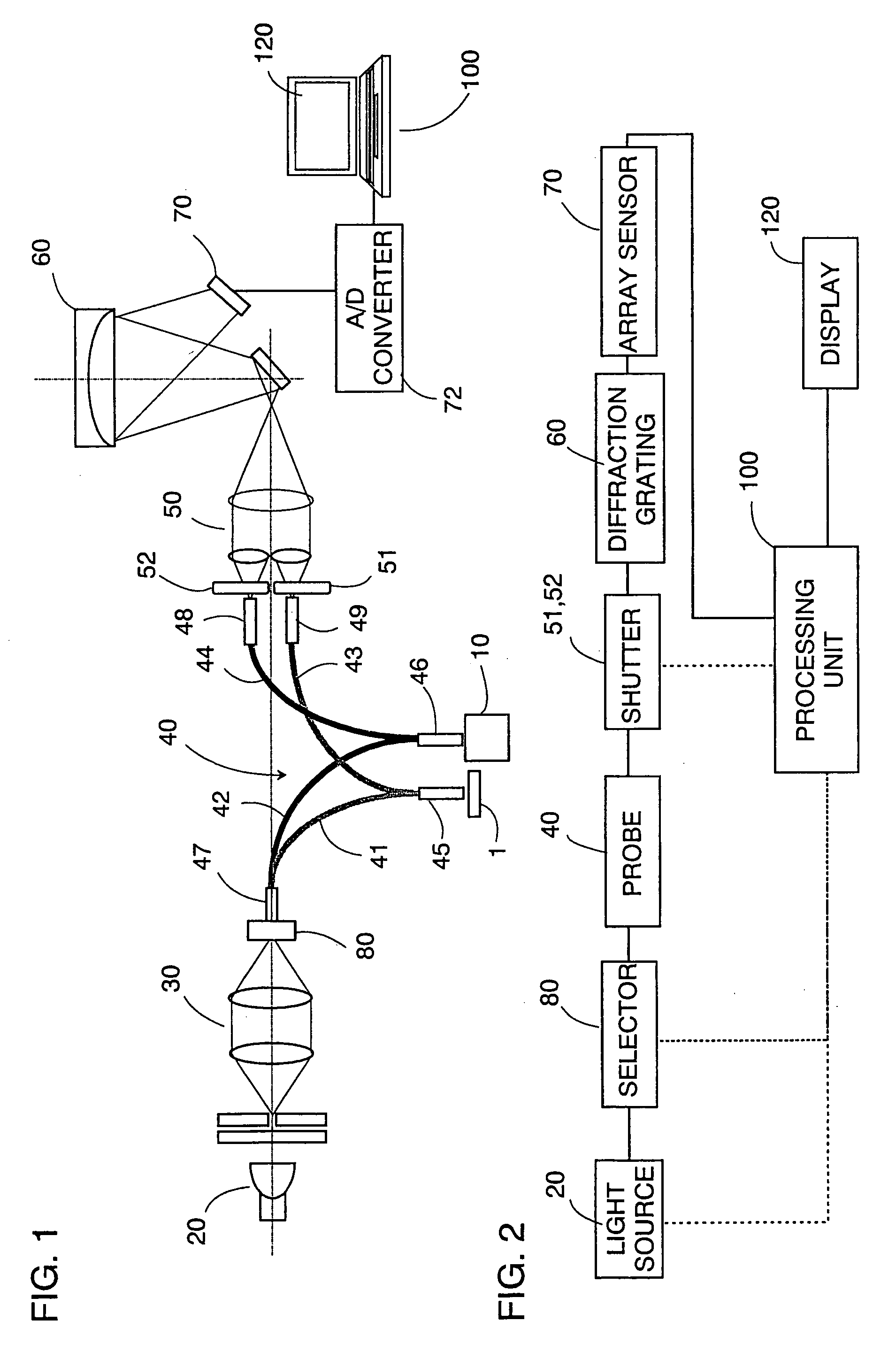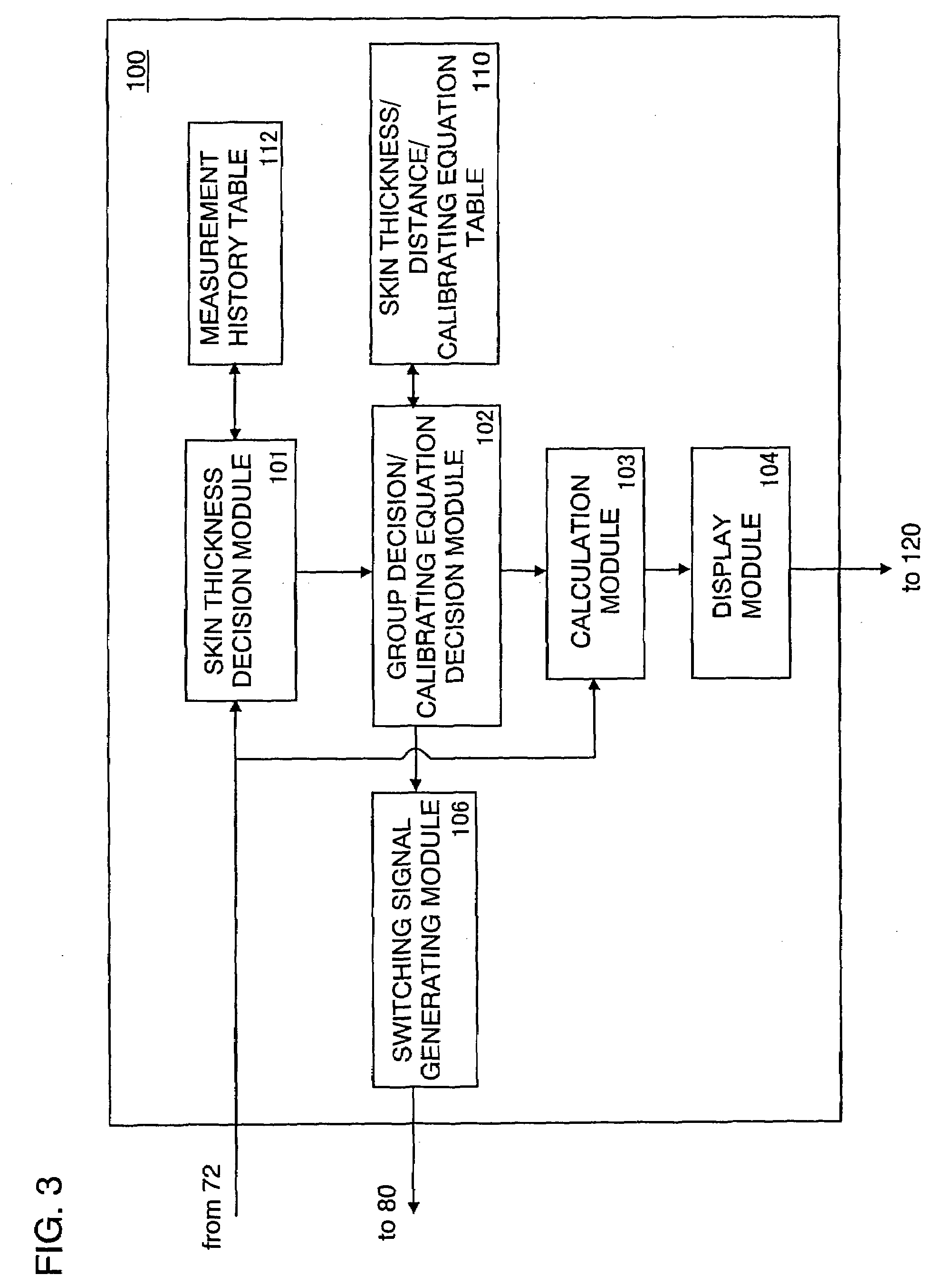Method and device for calculating a biological component density of a subject
a biological component and density technology, applied in the field of methods and devices for calculating the density of biological components of subjects, can solve the problems of difficult to carry out easy and correct measurement to each subject with big individual differences, subject preparation and calibration equations have to have heavy burden, etc., to achieve easy operation to the skin of subjects, and accurate measurement of biological component density
- Summary
- Abstract
- Description
- Claims
- Application Information
AI Technical Summary
Benefits of technology
Problems solved by technology
Method used
Image
Examples
first embodiment
[0035]FIG. 1 and FIG. 2 show a device for calculating a biological component density in accordance with the present invention. This device comprises a light source 20 which is a halogen lamp, a light projecting lens group 30 which condenses a light having a NIR spectrum from the light source 20, a probe 40 for irradiating the light which passed the light projecting lens group 30 to a standard board 1 and to a skin 10 of a subject and for receiving the light reflected diffusely therefrom, a condenser lens group 50 which condenses the light from the probe 40, a diffraction grating 60 for dispersing the NIR spectrum which passed the condenser lens group 50, an array sensor 70 for detecting the NIR spectrum dispersed by the diffraction grating 60, and a processing unit 100 which processes the electrical signal indicative of the NIR spectrum from the array sensor 70 thereby calculating the biological component density. In this embodiment, glucose density is calculated as an example of th...
second embodiment
[0077]The present invention is not limited to the above embodiment, the distance between the incident guide and the reflective guide on the end face of the object head 46 may be fixed to 650 μm, as a second embodiment shown in FIGS. 17 and 18. In this embodiment, reliable measurements of the glucose density is also possible by the same procedure as the above embodiment, i.e., first, the skin thickness of the subject is measured by the principal component analysis of the reflective spectrum from the skin, which is also used for the measurement of the glucose density, and the calibrating equation in match with the group corresponding to the skin thickness is selected.
third embodiment
[0078]FIG. 19 shows the present invention, in which, the skin thickness is determined by using a ratio of an absorption coefficient of the NIR spectrum reflected from the skin of the subject at a wavelength of 1728 μm (Ab1728) to an absorption coefficient at a wavelength of 1670 μm (Ab1670), in order to select the group classified in terms of the skin thickness. That is, when “Ab1728 / Ab1670>α(α: constant)”, then the skin thickness is judged to be less than 1.2 mm, and when “Ab1728 / Ab1670≦α”, then the skin thickness is judged to be 1.2 mm or more. After that, like the above embodiment, the glucose density is measured by substituting the NIR spectrum data into the calibrating equation in match with the selected group. In this embodiment, the probe of which distance between the incident guide and the reflective guide is 650 μm is used.
[0079]In this way, the group can be selected based on the skin thickness using the unique absorption wave length of the NIR spectrum caused by the fat co...
PUM
 Login to View More
Login to View More Abstract
Description
Claims
Application Information
 Login to View More
Login to View More - R&D
- Intellectual Property
- Life Sciences
- Materials
- Tech Scout
- Unparalleled Data Quality
- Higher Quality Content
- 60% Fewer Hallucinations
Browse by: Latest US Patents, China's latest patents, Technical Efficacy Thesaurus, Application Domain, Technology Topic, Popular Technical Reports.
© 2025 PatSnap. All rights reserved.Legal|Privacy policy|Modern Slavery Act Transparency Statement|Sitemap|About US| Contact US: help@patsnap.com



